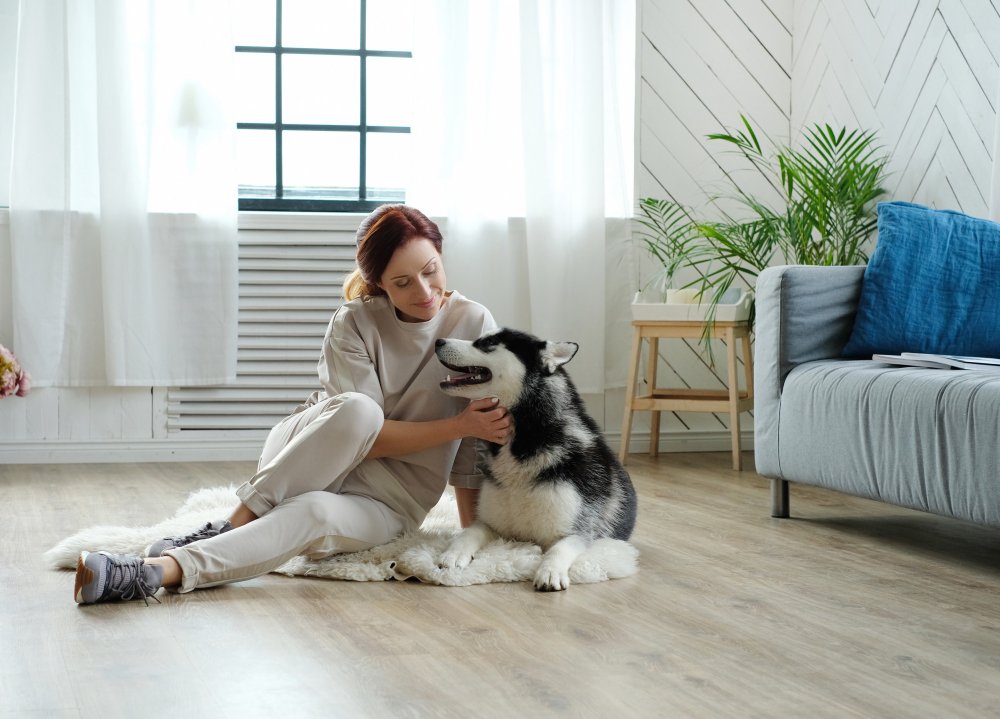Potty training is a crucial phase in a dog’s life, shaping their behavior and the bond they share with their owner. But, can you potty train a dog with a shock collar? This question and all other aspects need to be answered in detail.
Different potty training techniques have evolved, reflecting changes in our understanding of canine psychology and behavior.
Traditional methods often involve a schedule-based approach, where the dog is taken outside at regular intervals, especially after meals and naps.
Positive reinforcement, such as treats and praise, is used to reward the dog for successful elimination outdoors.
Shock collar training, on the other hand, introduces an element of aversive conditioning. A shock collar delivers an electric shock to the dog as a form of negative reinforcement or punishment for undesirable behavior.
Proponents argue that when used correctly, shock collars can be an effective and quick method for training, including potty training.
Critics, however, raise concerns about the potential for physical harm and long-term psychological effects on dogs, advocating for more humane and positive training methods.
The debate over the use of shock collars in potty training is multifaceted, involving ethical considerations, effectiveness, and the well-being of the dog.
As we delve deeper into this topic, we’ll explore the various perspectives and evidence surrounding this controversial tool.
What is a Shock Collar?
Shock collars, also known as electronic collars or e-collars, are training devices worn around a dog’s neck. Here we delve into their definition, purpose, and the mechanics of how they operate.
A shock collar is a specialized collar that delivers electrical stimulation to a dog. It’s designed to curb unwanted behaviors by associating certain actions with an uncomfortable sensation.
Initially developed for training hunting dogs in the late 1960s, these collars have since been adapted for a broader range of training purposes, including obedience training, boundary setting, and yes, even potty training.
The primary purpose of a shock collar is to modify a dog’s behavior through negative reinforcement.
By delivering a static electric shock, the collar aims to deter undesirable behaviors such as excessive barking, running away, or aggressive tendencies.
Some models also offer additional features like tones or vibrations, which can serve as warnings or less harsh corrective signals.
How Do Shock Collars Work?
Shock collars function by sending an electric current through metal contact points on the collar.
This current delivers a shock to the dog’s skin, which can range from a mild sensation to a more intense shock, depending on the settings controlled by the owner or trainer.
The intensity of the shock can be adjusted to various levels, allowing for customization based on the size, temperament, and response of the dog.
Owners must understand the appropriate use of these collars to avoid overcorrection or potential harm.
Proper training on the use of shock collars is recommended to ensure they are used humanely and effectively.

The Controversy Around Shock Collars
The use of shock collars on dogs is a subject of heated debate among dog owners, trainers, and animal welfare organizations.
This section will explore the ethical considerations and potential physical and psychological effects on dogs that are central to this controversy.
Ethical Considerations
The ethical debate surrounding shock collars hinges on whether it is morally acceptable to use pain or fear to train an animal.
Critics argue that shock collars are inhumane and represent a form of animal cruelty. They contend that positive reinforcement methods, which reward good behavior rather than punishing bad, are not only kinder but also more effective.
Some proponents of shock collars argue that, when used correctly, these devices can be a quick and effective training tool that does not cause long-term harm.
However, many animal welfare groups, including the RSPCA and the British Veterinary Association, oppose their use.
They cite research that indicates shock collars can cause stress and do not train dogs more effectively than non-aversive methods.
Potential Physical and Psychological Effects on Dogs
Physically, shock collars can cause harm ranging from burns to cardiac fibrillation.
Dogs may also develop phobias or exhibit increased stress levels, which can manifest in destructive or aggressive behaviors.
The psychological impact can be profound, with dogs potentially developing anxiety and a general fearfulness that extends beyond the specific behaviors the collar aims to correct.
Moreover, the use of shock collars can damage the trust between a dog and its owner.
Instead of learning from positive experiences, a dog may learn to associate their owner with fear and pain.
This can lead to a breakdown in the relationship and hinder the dog’s ability to learn new commands or behaviors.
Potty Training Basics
Potty training is a fundamental aspect of dog ownership, setting the stage for a lifetime of good habits. This section will cover traditional potty training methods and the critical role of consistency and positive reinforcement in the process.
Traditional Potty Training Methods
Traditional potty training methods are diverse, but they all share a common goal: to help the dog associate going to the bathroom with a specific location—outside or on a potty pad—and to do so on command or at appropriate times. Some of the well-known methods include:
- Infant Potty Training:
Also known as “elimination communication,” this method involves reading a puppy’s signals and timing outings to match their natural elimination patterns.
- Child-Oriented Potty Training:
Popularized by T. Berry Brazelton, this approach waits for signs of readiness from the dog and follows their pace.
- Fast Track Methods:
These are intensive programs designed to potty train quickly, sometimes in as little as three days.
- Gradual, Parent-Led Toilet Training:
This involves a more structured approach, with the owner guiding the dog through the process.
- The “Bare-Bottom” Method:
This technique allows the dog to roam without diapers, encouraging the natural development of potty habits.
Each method has its own set of pros and cons, and the choice largely depends on the dog’s personality, the owner’s schedule, and the living environment.

Importance of Consistency and Positive Reinforcement
Consistency is the cornerstone of successful potty training. Establishing a routine and sticking to it helps dogs understand what is expected of them.
Regular feeding times, frequent bathroom breaks, and a consistent ‘potty spot’ can all contribute to a smoother training process.
Positive reinforcement is equally important. Rewarding a dog for going to the bathroom in the correct place with treats, praise, or playtime reinforces the behavior you want to see.
It builds a positive association with the act of eliminating in the right spot and encourages the dog to repeat the behavior.
In contrast, negative reinforcement or punishment can lead to fear and confusion, potentially causing setbacks in training.
By focusing on positive reinforcement and maintaining a consistent routine, owners can foster a stress-free learning environment that promotes quick and effective potty training.
How to Potty Train with a Shock Collar
Potty training with a shock collar is a method some dog owners consider for quick results. However, it’s a controversial technique that requires careful consideration and a responsible approach.
Step-by-Step Guide
Below is a guide on how to implement this method, along with tips for effective training and common mistakes to avoid:
- Ensure the shock collar fits properly on your dog’s neck. It should be snug but not too tight, allowing for two fingers to fit between the collar and the neck.
- Let your dog get accustomed to wearing the collar without activating it. This helps prevent any association of the collar with negative experiences.
- Start with the lowest shock setting and only increase it if necessary.
- Take your puppy outside at consistent times, especially after meals and naps, and lead them to the designated potty area.
- Use a specific command word like “potty” to signal it’s time to go. Consistency with this command will help your dog understand what’s expected.
- Watch for signs that your dog needs to go, such as sniffing or circling, and immediately take them to the potty area.
- If your dog begins to eliminate indoors, use the shock in conjunction with a firm “No”. Then, take them outside to finish.
- Always praise and reward your dog for eliminating in the correct area to reinforce good behavior.
Tips for Effective Potty Training With a Shock Collar
Observe the following potty training tips with a shock collar:
- Slowly introduce your dog to the shock collar to avoid stress and anxiety.
- Maintain a regular potty schedule and always use the same potty area.
- Be vigilant about the shock level to ensure it’s only a mild correction
- Pair the shock with a verbal cue and follow up with positive reinforcement.
- Keep sessions brief and focused to prevent overwhelming your dog.
Common Mistakes to Avoid
Following mistakes should be avoided while potty training your dog with a shock collar:
- Using the shock too frequently can desensitize your dog to the correction.
- Not having a regular potty schedule can confuse your dog and lead to accidents.
- Failing to reward your dog for correct behavior can slow down the learning process.
- An incorrectly fitted collar can be ineffective or cause discomfort.
- Showing frustration or anger can damage the trust between you and your dog.
Pros and Cons of Using a Shock Collar for Potty Training
When considering the use of a shock collar for potty training, it’s important to weigh both the advantages and the disadvantages.
This section will provide a balanced view of the potential benefits and risks associated with this training method.
Advantages of Shock Collar Training
The following are a few advantages of shock collar training
- Shock collars provide immediate feedback to dogs, which can be crucial in correcting behavior at the moment it occurs.
- The remote control feature of shock collars allows owners to administer corrections even when the dog is not within arm’s reach, which can be particularly useful in large yards or open areas.
- Many shock collars come with a range of intensity levels, which can be adjusted to the dog’s size and sensitivity, ensuring the correction is not harmful.
- Shock collars can be used for a variety of training needs, not just potty training, making them a versatile tool for overall obedience training.
- Some owners find shock collars to be effective with particularly stubborn dogs who do not respond to other training methods.
Disadvantages and Risks
The following are a few disadvantages of shock collar training:
- If not used correctly, shock collars can cause physical harm to dogs, including burns or irritation on the neck.
- The aversive nature of shock training can induce stress, fear, or anxiety in dogs, which can have long-lasting negative effects on their well-being.
- There is a danger of overusing the shock function, which can lead to desensitization and reduce its effectiveness as a training tool.
- Using pain or fear as a training method can damage the trust between a dog and its owner, potentially leading to a strained relationship.
- In some countries, the use of shock collars is illegal or considered unethical, which raises questions about their acceptability as a training method.
Alternatives to Shock Collar Training
Exploring alternatives to shock collar training is essential for dog owners who prioritize humane and positive training methods.
This section will discuss various tools and methods that can be used as substitutes for shock collars, with a particular focus on positive reinforcement techniques.
There are numerous tools and methods available that can effectively guide dogs through the potty training process without the use of shock collars. Some of these include:
- Clicker Training
It’s used to mark the exact moment a dog performs the desired behavior, followed by a reward.
- Crate Training
Using a crate to establish a routine helps dogs learn to control their bladder and bowels, as they naturally avoid soiling their sleeping area.
- Potty Training Pads
These are specially designed pads that encourage dogs to eliminate in a specific spot indoors, which can later be transitioned to outdoor training.
- Leash Training
Keeping a dog on a leash and taking them to the same spot for bathroom breaks can help them associate that area with elimination.
- Barrier Systems
These non-shock systems create a boundary that dogs learn not to cross, useful for keeping them within a safe area.
Each of these methods can be tailored to fit the individual needs of the dog and the preferences of the owner, providing a range of options to achieve successful potty training.
Emphasis on Positive Reinforcement Techniques
This approach is not only humane but also builds a stronger bond between the dog and the owner. Techniques include:
- Offering a small treat immediately after the dog eliminates in the correct spot reinforces the behavior.
- Verbal praise or petting rewards the dog for their actions, encouraging them to repeat the behavior.
- Some dogs may be more motivated by a favorite toy than food, making playtime an effective reward.
- Using life rewards such as walks, access to favorite areas, or social interaction can be powerful motivators for dogs.
By consistently applying these positive reinforcement techniques, dogs learn to associate potty training with positive experiences, leading to quicker and more reliable results.
Final Thoughts
In the journey of potty training our canine companions, we are faced with a myriad of methods, each with its own set of advocates and detractors.
The use of shock collars for this purpose is undeniably controversial, presenting a stark choice between the allure of quick results and the potential for negative consequences.
As we have explored, there are numerous humane alternatives to shock collar training that are not only effective but also foster a positive and trusting relationship between dogs and their owners.
Tools like clickers, crates, and potty pads, along with methods that emphasize consistency and positive reinforcement, offer a compassionate approach to training.
Ultimately, the decision on how to potty train a dog should be made with the animal’s well-being as the foremost consideration.
By choosing methods that respect the dog’s physical and emotional health, we uphold our responsibility as pet owners to provide a loving and nurturing environment.

